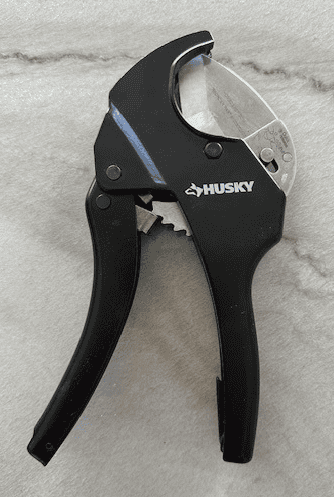The PVC cutter is a specialized tool designed for cutting polyvinyl chloride (PVC) pipes. They provide clean, precise cuts essential for plumbing, irrigation, and various DIY projects. These cutters are typically handheld, featuring sharp blades and ergonomic handles to ensure efficient and comfortable use.
History
The development of PVC cutters paralleled the rise of PVC as a popular material in the mid-20th century. As PVC became a staple in plumbing and construction due to its durability and cost-effectiveness, the need for specialized cutting tools arose. Early PVC cutters were simple, scissor-like tools, but advancements in design and materials have led to the modern, efficient cutters available today.
Types of PVC Cutters
- Ratchet Cutters
- Single Stroke Cutters
- Guillotine Cutters
- Rotary Pipe Cutters
- Power PVC Cutters
PVC Cutter Key Features
- Sharp Blades: Made from hardened steel for precise cuts.
- Ergonomic Handles: Designed for comfort and ease of use.
- Ratchet Mechanism: Provides additional cutting force and control.
- Safety Locks: Prevent accidental injuries.
- Adjustable Settings: Allow for cutting pipes of various diameters.
Choosing the Right PVC Cutter
Selecting the appropriate PVC cutter depends on the specific needs of your project. Consider the diameter of the pipes you’ll be working with and the frequency of use. For occasional home use, a ratchet cutter might suffice, while professional plumbers might prefer a durable, high-quality guillotine or power cutter for heavy-duty tasks.
Recommendations
Proper Use and Techniques
Using a PVC cutter correctly ensures clean, accurate cuts and extends the tool’s lifespan. Start by measuring and marking the pipe. Align the cutter blade with the mark, applying steady pressure as you squeeze the handles. For ratchet cutters, use a series of gradual squeezes to incrementally cut through the pipe.
Maintenance and Care
Regular maintenance of your PVC cutter will keep it in top condition. Clean the blades after each use to remove debris and prevent rust. Lubricate the moving parts periodically to ensure smooth operation. Store the cutter in a dry place and use the safety lock to prevent damage to the blades.
PVC Cutter Safety Tips
- Always wear safety glasses to protect your eyes from flying debris.
- Use gloves to protect your hands from sharp edges and accidental cuts.
- Ensure the pipe is securely held in place to prevent slipping during cutting.
- Follow the manufacturer’s instructions for use and maintenance.
Conclusion
PVC cutters are essential tools for anyone working with PVC pipes, providing the precision and efficiency needed for a wide range of projects. By choosing the right type, using proper techniques, and maintaining your cutter, you can achieve professional results and extend the tool’s lifespan.


